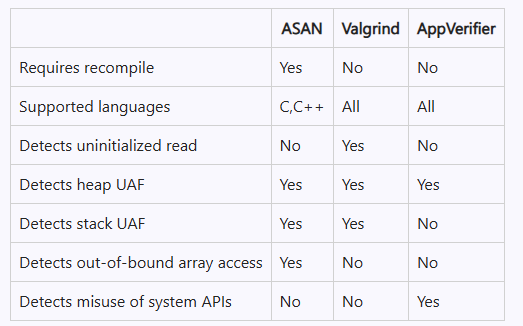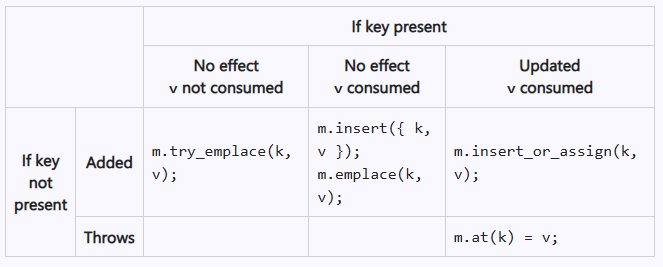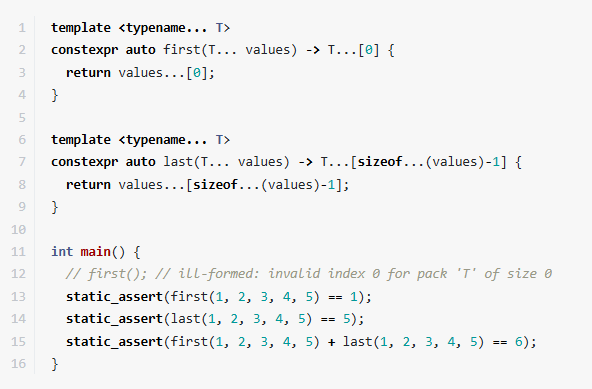A Pattern for Obtaining a Single Value While Holding a Lock -- Raymond Chen
 When working with a mutex-protected variable, you often need to read or modify its value while holding the lock, but then operate on the value outside the lock to minimize contention. While the traditional approach involves copying the value within a locked scope, using an immediately-invoked lambda or helper function can streamline this process, enabling efficient copy elision or move semantics to optimize performance.
When working with a mutex-protected variable, you often need to read or modify its value while holding the lock, but then operate on the value outside the lock to minimize contention. While the traditional approach involves copying the value within a locked scope, using an immediately-invoked lambda or helper function can streamline this process, enabling efficient copy elision or move semantics to optimize performance.
A Pattern for Obtaining a Single Value While Holding a Lock
by Raymond Chen
From the article:
It is often the case that you have a mutex or other lockable object which protects access to a complex variable, and you want to read the variable’s value (possibly modifying it in the process) while holding the lock, but then operate on the value outside the lock.
The traditional way is to do something like this:
// Assume we have these member variables std::mutex m_mutex; Widget m_widget; // Get a copy of the widget Widget widget; { auto guard = std::lock_guard(m_mutex); widget = m_widget; } ⟦ use the variable "widget" ⟧This does suffer from the problem of running the
Widgetconstructor for an object that we’re going to overwrite anyway. The compiler will also have to deal with the possibility that thelock_constructor throws an exception, forcing the destruction of a freshly-constructedguard Widget.

 In this blog post, we’ll explore implementing order-independent keyword arguments for C++ through use of C++26’s
In this blog post, we’ll explore implementing order-independent keyword arguments for C++ through use of C++26’s 
 Bjarne Stroustrup, the creator of C++, has outlined his vision for the language’s future in his article "21st Century C++," emphasizing the need for safer and more modern coding practices without abandoning its powerful legacy. His approach advocates for incremental improvements, such as guideline-enforcing profiles and enhanced type safety, ensuring C++ remains relevant in an era of heightened security and performance demands.
Bjarne Stroustrup, the creator of C++, has outlined his vision for the language’s future in his article "21st Century C++," emphasizing the need for safer and more modern coding practices without abandoning its powerful legacy. His approach advocates for incremental improvements, such as guideline-enforcing profiles and enhanced type safety, ensuring C++ remains relevant in an era of heightened security and performance demands. In today's post, I'll learn how modern C++ can influence the code you write for your embedded system. You will see code using up to C++23. The example I show you below circles around at least two questions I got various times from customers: What is consteval good for? What is that user-defined literal operator, and why should I care?
In today's post, I'll learn how modern C++ can influence the code you write for your embedded system. You will see code using up to C++23. The example I show you below circles around at least two questions I got various times from customers: What is consteval good for? What is that user-defined literal operator, and why should I care?


 C++26 introduces pack indexing as a core language feature, making it significantly easier to extract specific elements from parameter packs using a familiar subscript syntax. This improvement, proposed by Corentin Jabot and Pablo Halpern, eliminates the need for cumbersome workarounds like recursive templates or boolean expression tricks, providing a more intuitive and readable approach.
C++26 introduces pack indexing as a core language feature, making it significantly easier to extract specific elements from parameter packs using a familiar subscript syntax. This improvement, proposed by Corentin Jabot and Pablo Halpern, eliminates the need for cumbersome workarounds like recursive templates or boolean expression tricks, providing a more intuitive and readable approach.
 In this blog post, we’ll explore ways to improve the safety of a simple configuration manager. We’ll handle common pitfalls like dangling references and excessive stack usage. Additionally, we’ll see how C++26 helps enforce safer coding practices with stricter diagnostics and improved handling of large objects.
In this blog post, we’ll explore ways to improve the safety of a simple configuration manager. We’ll handle common pitfalls like dangling references and excessive stack usage. Additionally, we’ll see how C++26 helps enforce safer coding practices with stricter diagnostics and improved handling of large objects.